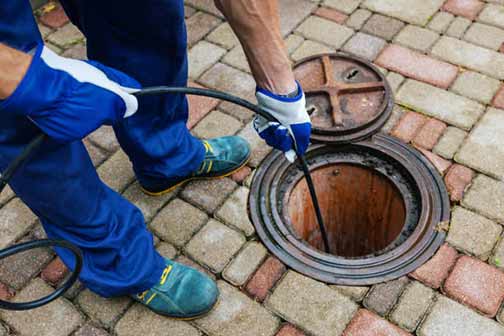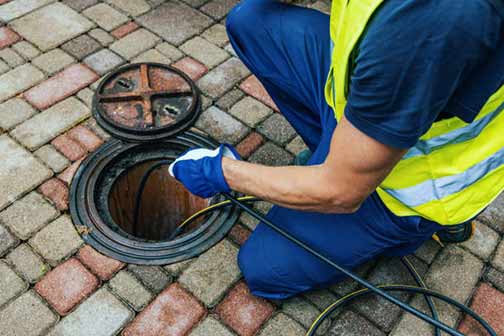
Industrial facilities have long relied on various maintenance techniques to ensure the smooth operation of their equipment and infrastructure. Traditional methods, such as manual cleaning, chemical treatments, and mechanical scraping, have been the go-to solutions for decades. However, these methods often fall short when it comes to cleaning hard-to-reach areas, leading to inefficiencies and potential operational disruptions.
The advent of hydro jetting has revolutionized the way industrial facilities approach maintenance. This innovative technique uses high-pressure water jets to clean and clear debris from surfaces, pipes, and equipment, offering a more efficient and effective solution for facility upkeep. By eliminating the limitations of traditional methods, hydro jetting has set a new standard for industrial maintenance.
Understanding Hydro Jetting: The Basics of High-Pressure Cleaning
Hydro jetting, also known as water jetting, is a process that involves the use of high-pressure water streams to remove buildup, debris, and contaminants from various surfaces and systems. The water is expelled through a specialized nozzle at pressures ranging from 4,000 to 10,000 psi (pounds per square inch), depending on the application and the level of cleaning required.
This technique is particularly effective for cleaning pipes, ducts, tanks, and other confined spaces where traditional methods may struggle to reach. The high-pressure water jets can easily navigate bends, curves, and tight spaces, ensuring a thorough and comprehensive cleaning. The versatility and precision of hydro jetting make it an ideal solution for a wide range of industrial maintenance tasks.
The Advantages of Hydro Jetting Over Traditional Methods: Efficiency, Safety, and Sustainability
Hydro jetting offers several advantages over conventional maintenance techniques, making it an attractive option for industrial facilities:
- Superior Cleaning Efficiency: The high-pressure water jets used in hydro jetting can remove even the most stubborn deposits and buildup, ensuring a more thorough cleaning compared to manual or chemical methods. This results in improved equipment performance and reduced downtime.
- Environmentally Friendly: Unlike chemical treatments, hydro jetting relies solely on water, making it an eco-friendly option that minimizes the use of harmful substances. This aligns with the growing emphasis on environmental sustainability in industrial operations.
- Non-Invasive and Safe: Hydro jetting is a non-invasive technique that does not require disassembly of equipment or infrastructure, reducing the risk of damage and ensuring the safety of both workers and machinery. This minimizes the potential for costly repairs and replacements.
- Cost-Effective: By providing a more efficient and effective cleaning solution, hydro jetting can reduce maintenance costs and extend the lifespan of equipment, leading to long-term savings for industrial facilities. The reduced need for chemical cleaners and manual labor further contributes to cost savings.
Applications of Hydro Jetting in Industrial Facilities: Versatility in Maintenance
Hydro jetting is a versatile technique that can be applied to various maintenance tasks within industrial facilities. Some common applications include:
- Pipe and Sewer Cleaning: Hydro jetting is highly effective for clearing blockages and buildup in pipes and sewer lines, ensuring optimal flow and preventing costly backups and disruptions. This is particularly important in facilities where uninterrupted operations are critical.
- Heat Exchanger Cleaning: The high-pressure water jets can remove scale and deposits from heat exchangers, improving their efficiency and performance. This helps maintain optimal temperature control and energy efficiency in industrial processes.
- Tank and Vessel Cleaning: Hydro jetting can clean the interior surfaces of tanks and vessels, removing residues and contaminants that can affect product quality and safety. This is essential for industries such as food and beverage, pharmaceuticals, and chemicals.
- Surface Preparation: Hydro jetting can be used to prepare surfaces for painting, coating, or other treatments by removing rust, scale, and old coatings. This ensures better adhesion and longevity of the new coatings, reducing the need for frequent reapplications.
- Equipment Maintenance: Hydro jetting can clean and maintain various types of industrial equipment, including pumps, valves, and conveyors, ensuring their optimal performance. Regular maintenance with hydro jetting can prevent unexpected breakdowns and extend the life of critical machinery.

Hydro Jetting Equipment and Technology: Precision and Innovation
The effectiveness of hydro jetting relies on advanced equipment and technology designed to deliver high-pressure water streams with precision and control. Key components of hydro jetting systems include:
- High-Pressure Pumps: These pumps generate the necessary water pressure for effective cleaning, with capacities ranging from several thousand to tens of thousands of psi. The ability to adjust pressure levels allows for customized cleaning solutions based on specific needs.
- Specialized Nozzles: Hydro jetting nozzles are designed to direct the water streams in specific patterns, optimizing the cleaning process for different applications and surfaces. Various nozzle designs are available to tackle different types of buildup and debris.
- Flexible Hoses: Durable and flexible hoses allow the water jets to reach confined and hard-to-access areas, ensuring comprehensive cleaning. The flexibility of the hoses ensures that even the most challenging areas can be effectively cleaned.
- Control Systems: Advanced control systems enable operators to adjust the water pressure, flow rate, and nozzle settings, ensuring precise and efficient cleaning. These systems enhance the safety and effectiveness of hydro jetting operations.
Safety Considerations in Hydro Jetting: Ensuring Safe and Effective Operations
While hydro jetting is a highly effective and safe maintenance technique, it is essential to follow proper safety protocols to prevent accidents and injuries. Key safety considerations include:
- Personal Protective Equipment (PPE): Operators should wear appropriate PPE, including safety goggles, gloves, and protective clothing, to shield themselves from high-pressure water and debris. PPE is essential for protecting against potential hazards during hydro jetting operations.
- Training and Certification: Proper training and certification are crucial for hydro jetting operators to ensure they understand the equipment, techniques, and safety protocols. Trained operators can perform hydro jetting tasks more efficiently and safely.
- Equipment Maintenance: Regular maintenance and inspection of hydro jetting equipment are essential to ensure its safe and reliable operation. Well-maintained equipment reduces the risk of malfunctions and accidents.
- Work Area Safety: The work area should be secured and marked to prevent unauthorized access and ensure the safety of nearby personnel. Clear signage and barriers can help maintain a safe working environment.
The Future of Hydro Jetting in Industrial Maintenance: Innovations and Sustainability
As industrial facilities continue to seek more efficient and sustainable maintenance solutions, hydro jetting is poised to play an increasingly important role. Advances in technology, such as the development of more powerful pumps, smarter control systems, and specialized nozzles, will further enhance the effectiveness and versatility of hydro jetting.
Additionally, the growing emphasis on environmental sustainability and the reduction of chemical use in industrial processes will drive the adoption of hydro jetting as a preferred maintenance technique. By providing a safe, efficient, and eco-friendly solution, hydro jetting is set to revolutionize the way industrial facilities approach maintenance and ensure their long-term operational success.
Future innovations in hydro jetting technology may include the integration of automation and robotics, enabling even greater precision and efficiency in industrial drain cleaning operations. These advancements will further solidify hydro jetting’s position as a cornerstone of industrial maintenance.
Conclusion: Embracing Hydro Jetting for a Cleaner and More Efficient Future
Hydro jetting has emerged as a revolutionary maintenance technique for industrial facilities, offering numerous advantages over traditional methods. Its ability to clean hard-to-reach areas, coupled with its efficiency, environmental friendliness, and cost-effectiveness, makes it an invaluable tool for facility upkeep.
As technology continues to advance and the demand for sustainable solutions grows, hydro jetting will undoubtedly become an integral part of industrial maintenance practices, ensuring the smooth and efficient operation of facilities for years to come. By embracing hydro jetting, industrial facilities can achieve cleaner, safer, and more efficient operations, paving the way for a more sustainable future.

